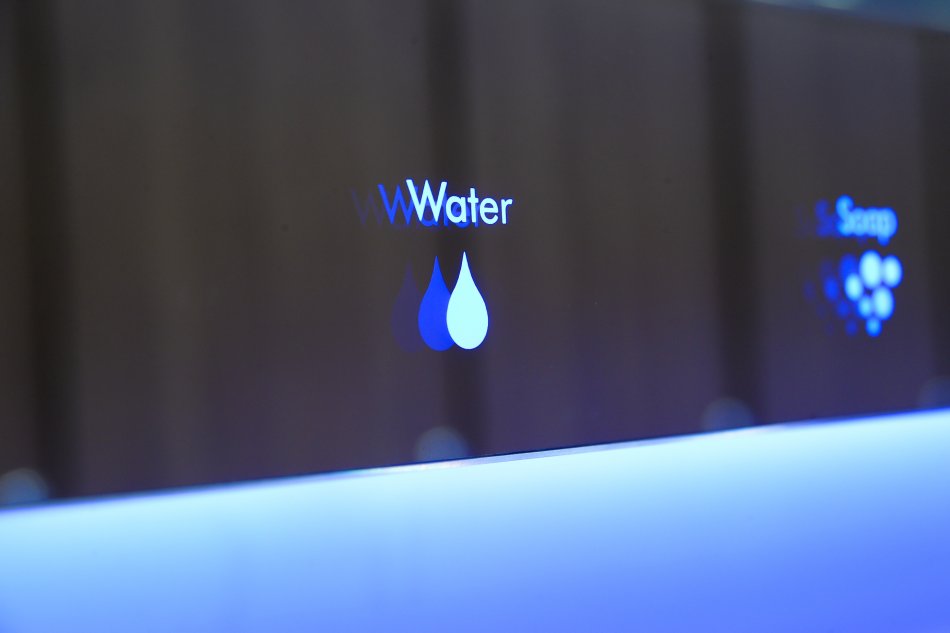Automation has revolutionised industries around the world—and the humble washroom is no exception.
Digital and hands-free technologies have changed the way people design, build and use washrooms, and for good reason.
Washroom automation is an investment that comes with long-term benefits, especially when it comes to reducing wastage, saving money and improving the overall user experience. It can decrease anxiety and discomfort for many users because automated technologies are intuitive and convenient.
Automated toilet facilities also require minimal maintenance and are expected to last longer because of reduced need for manual handling, which means they are less prone to wear and tear.
Take sensor taps and automatic hand dryers, for instance.
Sensor taps, even though powered by electricity, can end up being more energy-efficient in the long run. A sensor tap can be configured so that water pressure and temperature are pre-set. This means that no additional energy is used up in adjusting temperature every time it is turned on, which is the case with a hand-operated tap. Setting the water flow is an efficient way to minimise splashing and maintain a cleaner wash basin.
For users, sensor taps are more hygienic because of its hands-free features, which means less chances of cross contamination. The automatic sensor feature also addresses the common user issues with manual taps, like people forgetting to turn it off or getting burned by accidentally setting the water temperature too hot.
Most notably, sensor taps can reduce water wastage and consequently, help save money through lower bills. A leaky manual tap that has not been turned off properly is literally a leaking source of additional and unnecessary expenses. The money invested in automation technologies that promote sustainable water use may also be eligible for tax savings under the Enhanced Capital Allowance (ECA).
In the grander scheme of things, installing a sensor tap is a small step towards global efforts to conserve water. In the UK, one report noted that the average usage per day is 143 litres per person. With over 26 million properties—households and businesses combined—connected to a public supply water network, an ever-growing population and changing weather patterns that can lead to more droughts, any effort to conserve water is a ‘win-win’ for everyone.
Hand dryers, on the other hand, are common (and in some cases, even expected) fixtures in most commercial washrooms. It is considered an eco-friendlier alternative to paper towels and a more hygienic way to dry hands after washing. Of course, there is also the cost-saving benefit of not having to buy as much paper towels.
Another simple washroom automation technology that can truly make a difference is the automatic soap dispenser.
Like sensor taps, automatic soap dispensers are hassle-free and easy to install. The touch-free feature minimises point of contact for germ transfer and its sleek look attracts attention so that users are inclined to wash their hands after using the loo.
This type of dispenser also makes it easier for people who usually have a hard time reaching over to access the soap. It reduces wastage by preventing misuse and overestimation. And because it dispenses a uniform amount of soap (or sanitiser), it is easier to manage monthly soap use and budgeting for consumables.
Automation also has major benefits in improving the toilet experience for both users and management.
A publicly used washroom obviously has more users and an automatic flushing system can improve sanitation by ensuring immediate waste disposal, even in situations wherein users may forget to flush.
In addition to controlled water use, motion-activated flushing also conserves water through a time-delay system. This means that users cannot flush again and again, which can be the case in a manually operated toilet. Automatic flushing also makes the experience more convenient for certain types of users including the elderly and children who may be prone to flushing incompletely and those who are wary of touching anything inside the toilet and use their feet to operate the manual flush.
A common issue with toilets that reduce water flow is accumulation of limescale, which can lead to bacteria growth, repulsive odour and blocked pipework. To prevent this, the flushing system can be incorporated with treatments to combat build up.
Motion sensor lighting is another increasingly common feature in many washrooms. It’s an energy-saving improvement ideal for smaller spaces. It also helps extend the life span of the lighting system used in the washroom.
Toilet of the future
In Japan, the toilet is a showcase of the technological possibilities for public use washrooms. The country’s high-tech commodes are renowned across the globe, so much so that visitors actually look forward to the experience of going to the toilet.
Japan’s famed toilets feature heated seats (perfect for the cold weather), water jets with adjustable temperature settings, one-touch or motion-sensor flushing, seats or lids that automatically go up and down, hands-free bidet with massaging pressure, deodoriser, air dryer and in some models, even ambient or mood music.
And it’s not just in Japan. Soon, automated washrooms will become the norm in many developed countries around the world, both for commercial spaces and residential properties. Some homes now have automated facilities that include foot warmers, remote controls, sensors to alert owners to leaks, night light and emergency flushing when there is a power outage.
Washrooms used to be an after-thought in the design or building process. After all, it is not a space where people normally linger. However, evolving design principles are now assigning greater value to the crucial role of safe, clean and efficient washrooms in maintaining harmonious shared space. As smart technologies continue to develop and advance in all facets of daily life, people can look forward to increasingly automated washrooms.
Should you invest in automated features and facilities? Definitely. As stated above, there are many benefits to an automated washroom for all stakeholders involved. But before jumping into any trendy technology, make sure to plan carefully and consult with a professional so that automation truly adds value to the washroom experience.



